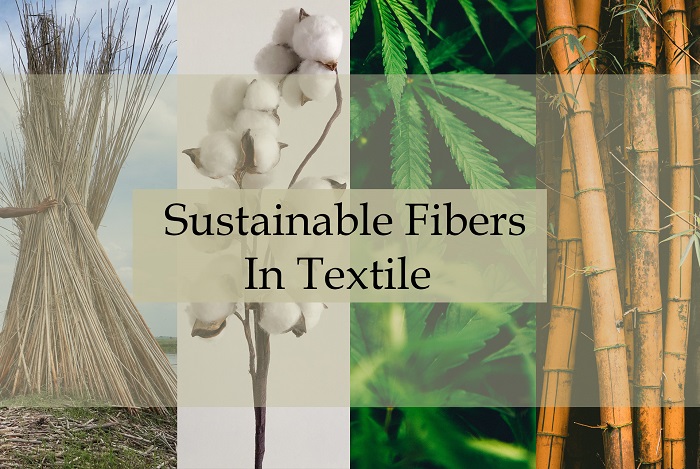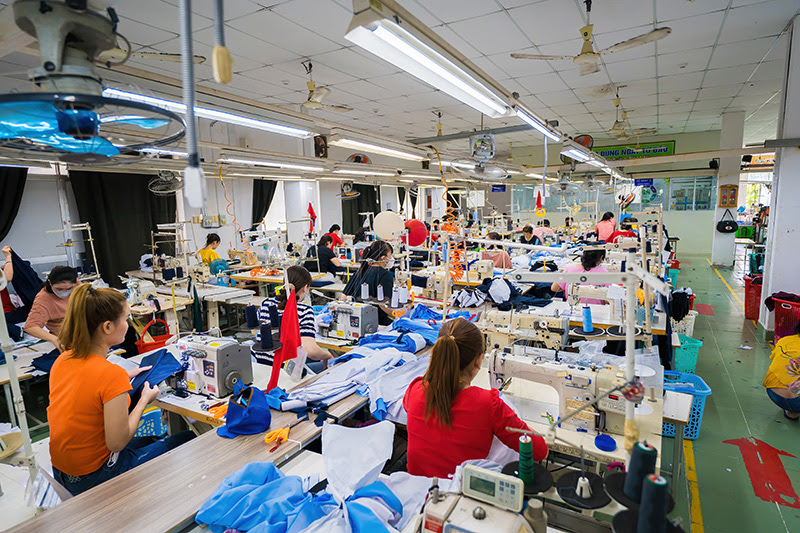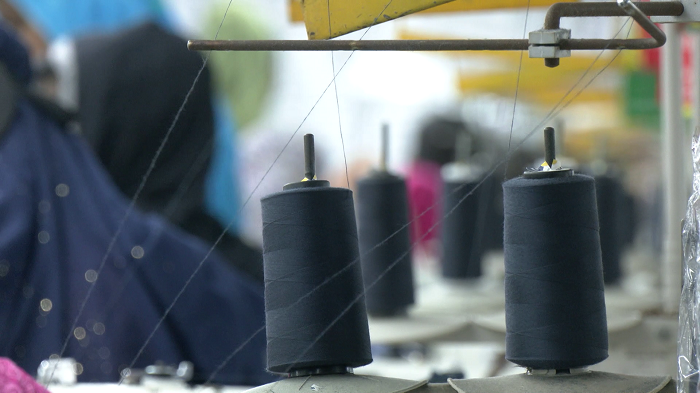The Good Fashion Fund, in collaboration with the Laudes Foundation and Fashion for Good, has invested $2 million in KKP Fine Linen Private Limited (KKPFL), a leading Indian manufacturer of bed linen and made-up products. The investment will help KKPFL install a state-of-the-art Effluent Treatment Plant (ETP) at its new wet processing unit in State Industries Promotion Corporation of Tamil Nadu (SIPCOT), Perundurai, Tamil Nadu. This plant, featuring a Zero Liquid Discharge (ZLD) system, will play a crucial role in improving the company’s environmental sustainability.
The new wet processing unit, with a capacity of 100,000 meters of fabric per day, aims to reduce chemical consumption, freshwater usage, and material waste while complying with stringent local pollution control standards. KKPFL’s commitment to sustainability is further highlighted by its 100 per cent renewable energy sourcing, with a significant portion (40 MW) coming from its own solar and wind power plants.
The investment will also contribute to the local community, with a focus on hiring workers from nearby areas. Gender and community development programs will be implemented alongside broader sustainability initiatives.
Sathesh Kumar Nallathambi, Managing Director of KKPFL, expressed excitement about the partnership, emphasizing that the funding supports the company’s commitment to sustainable practices and its growth in the home textiles market.
Bob Assenberg, Fund Director of the Good Fashion Fund, added that the investment aims to accelerate sustainable manufacturing in India’s home textile sector. KKPFL’s proactive approach to sustainability positions it as a leader in the bedding and made-up products industry, marking a significant step forward in the company’s journey toward a more sustainable future.
ZDHC has announced the release of two transformative documents aimed at advancing sustainable chemical management in the polyester recycling process. The Recycled Polyester Guidelines V1.0 and the Industry Standard Implementation Approach V1.0 are designed to enhance transparency across the textile, leather, and footwear industries by providing a unified framework for responsible recycled polyester production.
These comprehensive guidelines focus on three critical areas: Input Management, Process Management, and Output Management. They provide clear guidance on sourcing and handling recycled materials, such as bottles and textiles, and managing production chemicals safely. The guidelines also address best practices for chemical recovery, storage, and handling to ensure worker safety. Moreover, they outline strategies for reducing environmental impacts by managing emissions from wastewater, sludge, and air pollutants during polyester production.
In addition to the guidelines, ZDHC has introduced an implementation approach, offering a detailed roadmap for industry adoption. This approach is aimed at aligning industry stakeholders with ZDHC’s vision of eliminating hazardous chemicals from textile production, advancing supply chain transparency, and promoting sustainable development.
“This initiative fills a critical gap in managing recycled polyester materials, setting a new standard for environmental stewardship and worker protection,” said Liping Chai, Marketing Director at ZDHC.
ZDHC encourages the global textile industry to adopt these guidelines to drive more sustainable and transparent practices throughout the supply chain.
The ITMA ASIA + CITME Singapore 2025 exhibition has received unprecedented support, surpassing the expectations of its organizers with a 30 per cent increase in the number of applicants. The event, scheduled for 28–31 October 2025 at the Singapore Expo, has drawn over 770 exhibitors from 33 countries and regions, including international textile machinery manufacturers and new technology providers. Due to the overwhelming demand, organizers have expanded the exhibition space from 60,000 to 70,000 square meters.
Owned by CEMATEX (European Committee of Textile Machinery Manufacturers), China Textile Machinery Association (CTMA), and the Sub-Council of Textile Industry, CCPIT (CCPIT TEX), ITMA ASIA + CITME 2025 reflects the region's growing interest in cutting-edge textile technology. Alex Zucchi, president of CEMATEX, expressed gratitude for the industry's support, emphasizing the need to cater to emerging markets and help manufacturers remain competitive through technological advancements.
Gu Ping, president of CTMA, noted that digital technology is reshaping the textile industry, particularly in South Asia, Southeast Asia, and the Middle East. To meet the increasing demand, the Singapore event has been strategically placed between the ITMA ASIA + CITME 2024 and 2026 editions.
The exhibition will occupy seven halls at the Singapore Expo, with exhibits grouped into 19 product sectors spanning the entire textile and garment manufacturing process. The largest sectors, based on space bookings, include finishing, followed by spinning and knitting.
ITMA ASIA + CITME, Singapore 2025, branded as ‘The Leading Textile Technology Exhibition Driving Regional Growth,’ promises to be a pivotal event, connecting manufacturers and buyers eager to leverage the latest innovations in textile technology. The exhibition is organized by ITMA Services, with co-organization by Beijing Textile Machinery International Exhibition Company and special partnership with the Japan Textile Machinery Association (JTMA).
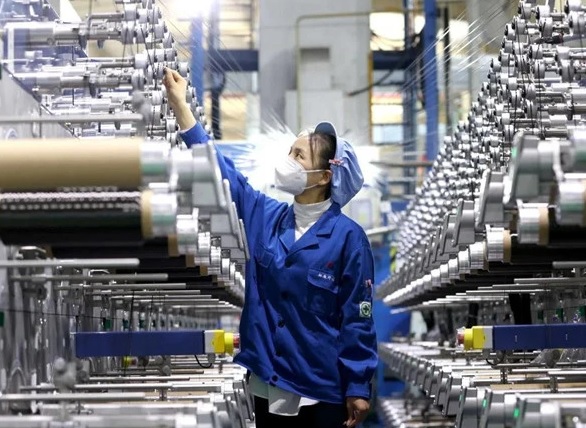
As the second China International Supply Chain Expo (CISCE) unfolds in Beijing, the spotlight shines on China's textile and apparel sector, a critical pillar of the nation's robust supply chain network and a major contributor to the global economy.
China has solidified its position as a dominant force in the textile and apparel industry, boasting the world's largest production capacity and export volume. This success is due to several factors.
• Scale: China's textile industry leads with over 40 per cent of the world's 500 major industrial products, holding the top spot in global manufacturing for 14 consecutive years. This massive scale translates into competitive pricing and a vast array of product offerings.
• Supporting systems: Over the years, China has created a comprehensive supporting ecosystem for the textile industry, which encompasses raw material production, textile machinery manufacturing, and efficient logistics networks. This integrated approach streamlines production processes and enhances overall efficiency.
• Technological advancement: The industry is increasingly embracing automation and advanced manufacturing technologies to improve productivity and product quality. Investments in research and development are driving innovation in areas like sustainable textile production and smart manufacturing.
Table: China’s market share
|
Metric |
Value |
Source |
|
Global textile and apparel market share |
31.6% (2023) |
Sheng Lu Fashion |
|
Total value of textile and apparel exports |
$164 billion (2023) |
Sheng Lu Fashion |
|
Domestic consumption of textile and apparel production |
70-80% |
Sheng Lu Fashion |
|
Number of R&D projects in the textile and apparel sector |
Over 10,000 (2022) |
Statista |
Despite facing challenges such as rising labor costs and increasing competition from other low cost countries, China's textile and apparel sector has shown resilience and adaptability. The industry is actively pursuing strategies to maintain its competitive edge.
The sector has shifted focus to higher-value products, moving away from basic garments, like functional apparel and fashion-forward designs. With growing demand for eco-friendly products, the industry is also investing in sustainable practices, such as recycled materials and reducing water and energy consumption. Also, Chinese textile and apparel companies are actively developing their own brands to enhance their global recognition and capture a larger share of the value chain.
China's commitment to further integrating its textile and apparel sector into the global supply chain is evident. The CISCE serves as a platform to showcase the industry's strengths, foster international collaborations, and explore new opportunities for growth. As the world becomes increasingly interconnected, China's textile and apparel sector is poised to remain a vital thread in the fabric of the global economy.

A new report by Source Fashion and Insider Trends, recent changes to EU customs regulations could significantly impact sourcing operations for UK retailers.
The report, titled ‘The State of Sourcing Report: Sourcing and Sustainability in 2025’, is based on a survey of UK retailers of all sizes. It provides insights into current sourcing practices and sustainability trends in the retail industry. The report also includes data tables, quotes, and case studies from industry leaders.
Sourcing practices
• The majority of UK retailers (74 per cent) source internationally.
• China is the most popular sourcing region (49 per cent), followed by the UK (42 per cent), India (37 per cent), and Western Europe (33 per cent).
• Cost of production is the primary reason for choosing sourcing regions (46 per cent of respondents).
• Smaller companies are more likely to source from closer regions due to various factors like preference, shorter lead times, or barriers to sourcing from further afield.
The report highlights that in February 2024, the EU removed customs duty exemption for goods valued at less than €150. This change could potentially affect 2.3 billion items that were previously imported duty-free into the EU in 2023. The report suggests the new regulations could shift sourcing operations away from China towards other regions. While China remains attractive for its established production capabilities and supply chains, pressures on the country might make it less appealing. India, with its growing importance as a sourcing region, could be a potential alternative. The report includes case studies of companies like ASOS, Boohoo, and Asda's George fashion range, which have faced scrutiny over their sustainability claims. These cases highlight the need for clear guidance and collaboration within the industry to tackle sustainability challenges effectively.
The new EU customs regulations could have a significant impact on sourcing operations for UK retailers. The report recommends that retailers adopt a more agile approach to their supply chains and consider diversifying their sourcing regions. It also emphasizes the need for industry collaboration and clear guidance on sustainability practices.
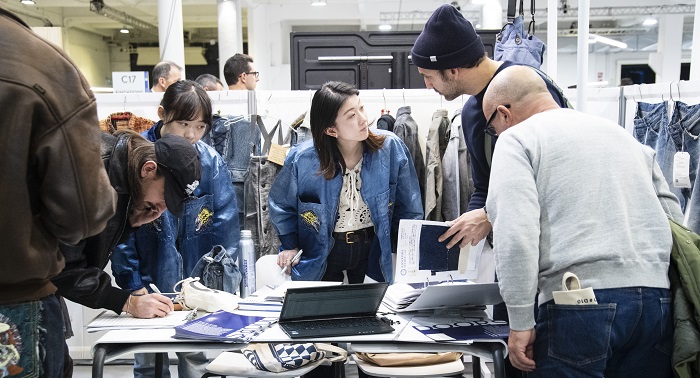
Denim Premiere Vision 2024, held from December 4-5, saw over 2,600 visitors at SuperstudioPiu in Milan for the global denim event. This two-day gathering, under the patronage of the City of Milan, served as a platform for denim professionals to explore the latest trends, innovations, and sustainable practices shaping the denim sector for the Spring-Summer 26 season.
A hub for innovation and collaboration
Denim Premiere Vision continues to solidify its role as a key meeting point for global fashion brands, designers, manufacturers, and industry experts. The event’s success was reflected in the impressive attendance and its vibrant, collaborative atmosphere. Visitors had the opportunity to network with top industry players, explore cutting-edge denim collections, and gain insights into the future of denim design, production, and sustainability.
Florence Rousson, President of Premiere Vision, emphasized the industry's forward-thinking spirit: "Denim is evolving with unique versatility, from casual to sophisticated, and has become a cornerstone of the luxury sector. This edition embodied the collective energy and determination of our industry to drive innovation while addressing the challenges of sustainability."
Fostering dialogue and idea-sharing
The event was marked by dynamic conferences and Pitches, offering attendees valuable opportunities to engage with experts and learn about the latest technological advancements and sustainable initiatives in denim production. These sessions provided a platform for reflection, discussion, and the exchange of ideas to address the industry's evolving needs.
One of the key highlights was the Bioawake presentation by Orta, which showcased the future of eco-friendly denim production. Experts also discussed the transformation of washing, dyeing, and material management processes, with an emphasis on reducing environmental impact while maintaining quality. Andrea Venier’s ‘Zero PP’ concept also offered new insights into eliminating plastics from the denim production cycle.
The event's emphasis on innovation was coupled with a commitment to craftsmanship, particularly in the context of Italy's renowned denim manufacturing expertise. The discussions underscored the importance of blending traditional craftsmanship with cutting-edge technologies to create sustainable products.
Sustainability and fashion forward thinking
Sustainability was a central theme of this edition. The event presented solutions that aim to reduce the environmental footprint of denim manufacturing. One of the most notable discussions was led by Amy Leverton, founder of Denim Dudes, who explored the influence of pop culture, protest movements, and shifting societal values on denim design, manufacturing, and marketing. Leverton’s presentation underscored how cultural shifts will continue to shape the future of fashion.
In addition to sustainability, the conference program also focused on the sociocultural dynamics of the Middle Eastern market, offering insights into market entry strategies and growth prospects for denim in the region. A key theme was the role of women in revolutionizing fashion trends, with discussions highlighting how female figures are redefining stylistic and social norms in the industry.
Looking ahead: Trends for Spring-Summer 26
Denim experts, led by Juliet aMercerat, provided a preview of the Spring-Summer 26 season’s denim trends, outlining emerging stylistic and technical developments. These fashion seminars offered attendees a valuable opportunity to explore innovations in denim manufacturing, while also providing actionable insights for brands looking to stay ahead of the curve.
Key figures and global reach
Denim Premiere Vision 2024 saw the participation of 2,610 visitors, including fashion and accessory brand leaders, buyers, designers, and production managers from 14 countries, including Italy, France, Germany, the United States, and China. The event hosted 71 exhibitors, with a strong representation from denim spinners and weavers, manufacturers, and accessory producers. Additionally, 15 international hosted guests participated in strategic investment programs aimed at fostering key industry connections.
Looking forward to 2025
Denim Premiere Vision will return on May 21-22, 2025, for the Fall-Winter 26-27 season, continuing to serve as an essential hub for industry professionals to explore innovation, sustainability, and the future of fashion.
Zalando SE, the Berlin-based online fashion giant, has agreed to acquire rival About You Holding SE for €1.2 billion, marking a major step to solidify its dominance in Europe’s e-commerce market. The offer of €6.50 per share represents a 67 per cent premium to About You’s last closing price.
The acquisition, backed by About You's management and major shareholders, including the Otto family and Denmark’s Holch Povlsen, will expand Zalando’s share of Europe’s €450 billion fashion and lifestyle market. About You, founded in 2014, boasts 12 million monthly users and a portfolio of 700,000 items. Its Scayle platform, which supports retailers’ digital growth, complements Zalando’s Zeos system.
The two brands will operate independently, but synergies in logistics and operations are expected to yield €100 million annually. The deal, pending regulatory approval, aims to enhance business-to-business services and long-term profitability despite potential competition concerns.
The National Council of Textile Organizations (NCTO) commends the House of Representatives for passing the Fiscal Year 2025 National Defense Authorization Act (NDAA). The legislation reinforces the Berry Amendment, mandating the Department of Defense (DOD) to procure 100 per cent USmade textiles and clothing, while introducing new measures to bolster domestic manufacturing.
Key provisions include authorizing the Secretary of Defense to establish pre-positioned stocks of defense textiles needed for contingency operations while developing plans to mitigate delays in ramping up supply. Additionally, the legislation enhances transparency for domestic nonavailability determinations (DNADs) by mandating annual public disclosure and requiring the Under Secretary of Defense for Acquisition and Sustainment to maintain and share a comprehensive DNAD list with Congress and industry.
“These provisions strengthen the domestic textile industry’s role in national defense,” said NCTO President and CEO Kim Glas. “The Berry Amendment supports a secure, USbased supply chain for critical defense materials, reducing reliance on foreign suppliers like China.”
US textile mills produce over 8,000 products annually for the military, including advanced uniforms and equipment valued at more than $1.8 billion. This industry ensures the highest quality goods for US armed forces while safeguarding national security through innovative, American-made materials.
Glas emphasized the strategic importance of the domestic textile industry, urging swift Senate approval of the NDAA. “A robust US textile base is essential for providing our military with the vital materials they need,” she said.
The NCTO looks forward to continued collaboration with policymakers to support American manufacturing and defense readiness.
Parent company of the fast fashion brand Zara, Inditex reported 10.5 per cent rise in sales to €27.4 billion during Q3, FY24. The brand’s profit after tax increased by 6 per cent Y-o-Y to €1.68 billion during the quarter, while revenues declined by 2 per cent below analysts’ expectations to €9.4 billion. Despite slightly missing consensus estimates, Inditex remains ahead of its competitor H&M, leveraging Zara's brand strength and trend-driven appeal.
Zara continues to consolidate its position through strategic expansions and collaborations. The brand opened a 7,500-sq-ft Zara Man store in Madrid, offering exclusive collections featuring natural materials like cotton and cashmere. This store also houses Zacaffè, a coffee shop reflecting local architectural styles, a concept already tested in Paris, Lisbon, and Dubai. New café locations are planned for Seoul and Osaka in 2025.
In addition, the Madrid Zara Man store created space for a Zara Apartment concept, launching next year with curated homewares. The brand also upgraded the floor space at its California and Florida stores for improved customer experiences.
Inditex is optimising its retail strategy by reducing store counts while expanding younger-skewing concepts like Pull & Bear. The company also launched a teen line, Z3D, within Zara.
Looking ahead, Inditex plans to upgrade its infrastructure with an investment of €1.8 billion. The company is set to open a logistics center in Zaragoza in 2025. It has also made an investment in Epoch Biodesign to develop AI-driven recycling solutions for polyester and mixed-textile collections.
Compared to the previous season, India’s total cotton production is estimated to decline by 4 lakh bales to 250 lakh bales in 2024-25. In 2023-24, India’s total cotton production had increased to Rs 254 lakh bales, as per a report by USDA. This decline in production of 4 lakh bales is attributed to a reduction in sowing area of approximately 14 lakh hectare and crop damage from natural calamities in certain regions.
Based on bales weighing 480 pounds (213 kg), the USDA report estimates, total available cotton stocks in India are likely to be around 366 lakh bales. These will include 93 lakh bales of outstanding stock, 250 lakh bales from domestic production, and 23 lakh bales of imports.
In terms of consumption, 260 lakh bales are expected to be used domestically, while 13 lakh bales are likely to be exported, with the remaining 93 lakh bales to remain as surplus stock by the end of the season.
In comparison, India had a starting stock of 108.20 lakh bales during the 2023-24 season. It produced 254 lakh bales and imported 8.90 lakh bales.
Domestic consumption totaled 255 lakh bales, and exports amounted to 23.10 lakh bales, leaving a surplus stock of 93 lakh bales at the season's close.
The USDA’s surplus stock estimate has been questioned by India’s Cotton Association, which believes the figure is higher than expected.
- 1
- 2
- 3
- 4
- 5
- 6
- 7
- 8
- 9
- 10
Peeling Back the Fabric: Glimpact study gives true ecological threads of apparel…
A groundbreaking new study by Glimpact, has pulled back the curtain on the often-obscured environmental footprint of the apparel industry,... Read more
Embracing Innovation: The rise of sustainable fibers in a changing world
The quest for sustainable and high-performance alternatives to traditional resources has sparked a revolution in fiber use. According to the... Read more
Garment Tech Istanbul to showcase cutting-edge apparel technology and drive glob…
A global hub for apparel innovation Istanbul will welcome leading global players in garment, embroidery, and textile machinery from June 25... Read more
From discarded threads to global trends, Panipat's recycled yarn revolution
Panipat, a city synonymous with textiles, is rapidly evolving from a traditional weaving hub to a powerhouse of sustainable yarn... Read more
Bangladesh emerges strong in global RMG exports as China's loses ground
Bangladesh is rapidly strengthening its position as a major player in the global apparel export market, capitalizing on a shift... Read more
Blossom Premiere Vision returns in June to support luxury fashion's shifting nee…
As the global luxury goods market grapples with a prolonged slowdown, an industry once resilient to crises is now undergoing... Read more
Monforts technologies power sustainability showcase at Kingpins Amsterdam
Denim mills using Monforts systems dominate eco-focused fabric displays At the recent Kingpins Amsterdam exhibition held on April 16-17 at the... Read more
Bangladesh RMG exports navigate new skies amid cost concerns post India's trans-…
Bangladesh's RMG export is adapting to India's revocation of trans-shipment services, marked by maiden freighter flight carrying 60 metric tons... Read more
A stitch in time, fashion's 1% solution to a carbon crisis
The fashion industry, built on trends and textiles, is facing a stark reality: its environmental footprint is unsustainable. Hidden deep... Read more
Threadbare Foundations: Bangladesh’s RMG boom hangs by Indian yarns
Bangladesh’s ready-made garment (RMG) industry is a global juggernaut. Second only to China in apparel exports, the sector is the... Read more


